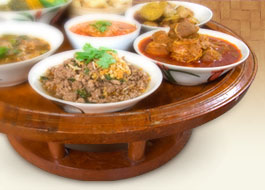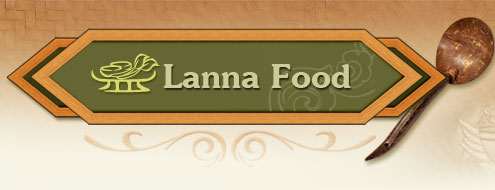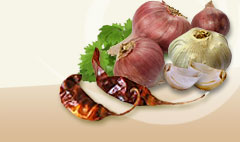Cinnamon |
|
|
 | Cinnamomum bejolghota |
|
| |
 | Lauraceae |
|
| |
 | Cinnamon |
|
| |
 | Op choei thai is known by other names: op choei, op choei ton, maha prap, chiat, fak dap (Pitsanulok), phaya prap (Nakhon Ratchasima), hak kaeng kole (Karen-Kamphang Saen), nema (Karen-Kanchanaburi), sura marit (Southern, Pitsanulok, Nakhon Ratchasima), mong, mong hom (Chon Buri), khiat kathang han. (Wut Wuthithamwet, 1997, p. 501) |
|
| |
 | Tree, family Lauraceae, many varieties: Op choei thet, op choei chin, op choei chawa, op choei yuan. (Phennapha Sapcharoen, 2005, pp. 89-91) Wut Wuthithamwet (1997) mentions 3 kinds: op choei thai, op choei thet and op choei chin. Op choei thai is a tree of a medium size, 4-10 m. high. Leaves lanceolate, blunt or slightly pointed at both ends, with 3 veins, thick, dark green, 4-6 in. long. Bark 3-5 mm. thick, fragrant, commonly grows in high evergreen forests, especially in the north. Flower small, light yellow, spikes. Fruit oval, green, propagates by seeds. Op choei ton or maha prap has a thick rough skin and is not as fragrant as op choei thet. (Wut Wuthithamwet, 1997, p. 500) Op choei thet, or Ceylon cinnamon, or True cinnamon belongs to the group Cinnamomum verum J.S. Presl whose family name is C. zeylanicum Garc.ex Bl. (Phennapha Sapcharoen, ed., 2005, pp. 89-91) A medium size tree. Leaves lanceolate, slightly pointed at both ends, 3 midribs, thick, smooth and leathery, dark green. Inflorescence spike, yellow. Fruit ovate, bark thin and smooth, 2-3 mm. thick, fragrant, imported from India and Sri Lanka, it was discovered in Thailand (1996) around elevated evergreen forests at the border, many hundred trees, some were 10-15 m. high, bark thin and smooth the same as the imported kind, very fragrant. (Wut Wuthithamwet, 1997 p. 501) Op choei chin or Chinese cinnamom; False cinnamon; Cassia lignea; Chinese cassia and Cassia bark comes from Cinnamomum aromaticum nees, family name C.cassia Nees ex Bl. and C. cassia Presl (Phennapha Sapcharoen, ed., 2005, pp. 89-91) The Chinese variety has a slightly thicker bark than op choei thet and is imported from China (Wut Wuthithamwet, 1997, p. 501) Op choei chawa or Batavia cassia; Batavia cinnamom and Penang cinnamon has the scientific name Cinnamomum burmanii Blume. The variety sold in the market that is called op choei thet is actually the chawa variety and not as fragrant as the the Sri Lankan kind. It is often used in the spice mix for massaman and khao mok kai (Phennapha Sapcharoen, ed., 2005, pp. 89-91) Op choei yuan is called in English Cinnamomum louririi Nees, family name, C. obtusifolium Nees var. loureirii Perr. et Eb. (Phennapha Sapcharoen, ed., 2005, pp. 89-91) |
|
| |
 |

Op choei thai bark has a nice fragrance, is used as an cardiotonic, to boost energy, for passing wind, enhancing the elements, as an anti-dysentery, treat dizziness, relieve headache. The roots and leaves are also very fragrant and can be boiled to drink to reduce fever due to inflammation after giving birth, stimulates gas movement and relieves stuffiness. (Wut Wuthithamwet, 1997, p. 500)
Op choei thet roots have a nice fragrance and are good for reducing paralysis, treating fever and to enhance the elements. The bark is spicy hot and sweet in taste and is also good to treat paralysis, increase stamina and treat gastritis. (Wut Wuthithamwet, 1997, p. 501)
Op choei chin has similar properties and uses as op choei thet (Wut Wuthithamwet, 1997, p. 501)
|
|
| |
 |
Phennapha Sapcharoen, ed.. (2005). Khrueangphrung Nai Ahan Thai. Nonthaburi: Center for Development of Text on Traditional Thai Medicine. Wut Wuthithamwet. (1997). Saranukrom Samunphrai: Ruam Lak Pesatchakam Thai. Bangkok: Odeon Store. |
|
| |
|
|




